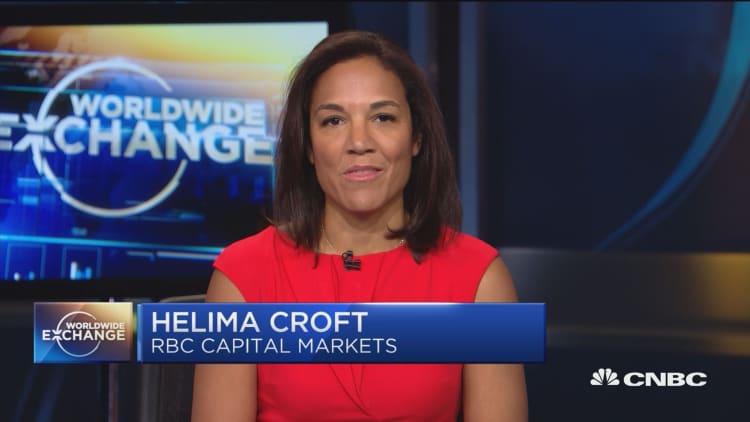Oil prices softened on Wednesday ahead of data expected to show rising crude inventories in the United States and as the dollar strengthened from last week's three-year lows.
West Texas Intermediate (WTI) crude futures ended Wednesday's session down 11 cents at $61.68 a barrel. Brent crude futures were up 20 cents at $65.45 a barrel by 2:29 p.m. ET.
The premium of Brent over WTI widened to almost $3.60 a barrel, having neared its narrowest in six months on Tuesday as concern about a bottleneck of Canadian crude imports underpinned U.S. futures.
Traders are awaiting the latest data on U.S. inventories from the American Petroleum Institute, set to be released at 4:30 p.m. ET and government figures due on Thursday at 11 a.m., both delayed a day due to a holiday on Monday.
U.S. inventory data is due later in the day and stocks are expected to have risen by 1.3 million barrels in the week to Feb. 16, according to a Reuters poll.

U.S. crude oil production surpassed 10 million barrels per day (bpd) in November for the first time since 1970, hindering efforts by the Organization of the Petroleum Exporting Countries and other producers, led by Russia, to reduce bloated global inventories and prop up oil prices by cutting output.
The dollar steadied against other major currencies, buoyed by the rise in short-term U.S. government bond yields their highest in over nine years. A stronger greenback typically puts pressure on dollar-denominated commodities like oil.
The dollar gave up earlier gains after minutes from the Federal Reserve's most recent policy-setting meeting indicated the central bank will continue to raise interest rates as it anticipates continued economic growth and higher inflation.
Oil gained some support by a gain on Wall Street.
"Oil prices and the S&P have been highly correlated, of late, with economic strength translating into improved company performance and higher energy demand," said John Kilduff, partner at investment manager Again Capital in New York.
The Organization of the Petroleum Exporting Countries and other producers, including Russia, will discuss extending their existing cooperation for many more years when they meet in June as they seek to avoid major market shocks, the United Arab Emirates' energy minister told Reuters on Tuesday.

The group has agreed to cut crude output by 1.8 million bpd throughout this year to force global inventories to drain.
Futures prices have also been dented by the physical markets, which are showing signs of seasonal weakness, given that most of the world's refineries close, either partially or wholly, to conduct maintenance at this time of year and cut their crude intake as a result.
Differentials, or prices for physical barrels, have slid on both sides of the Atlantic and it is the cheaper sour, or more sulphourous, grades that have borne the brunt of the declines.
Prices for North Sea barrels on Tuesday recovered after hitting their lowest levels since mid-2017, as an overhang of surplus oil has materialized.
Light, sweet West African grades have proven to be the most resilient in the Atlantic basin, thanks in large part to demand from China, but Mediterranean crudes, including Russian Urals, have slid since the start of the year.
"European maintenance does not peak until May, two months later than last year, and demand in Q1 18 has been hobbled by unusually warm weather," consultant Energy Aspects said.
— CNBC's Tom DiChristopher contributed to this report.

